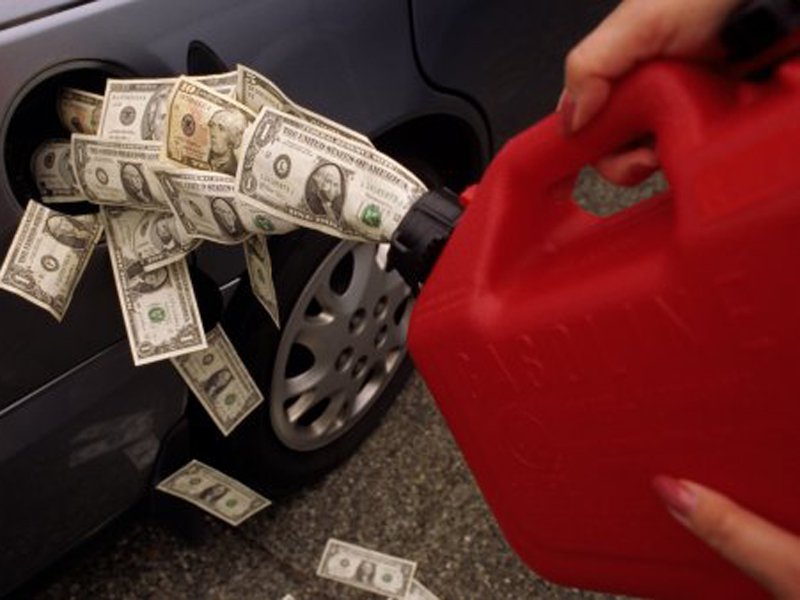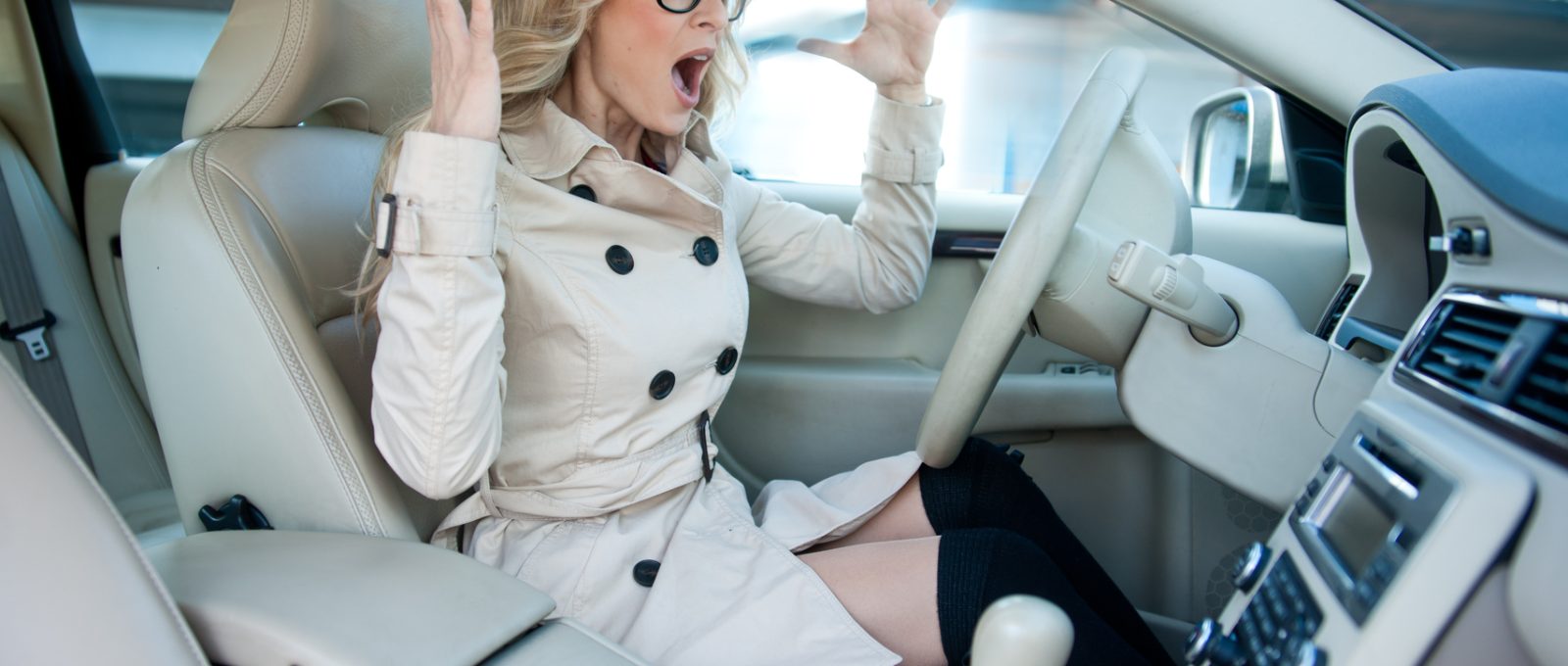Cars have always been considered a luxury, and recently they have become a necessity, for which many are ready to pay a pretty penny. And so, having bought one, car owners think about how to save money, where to buy spare parts cheaper, how not to miscalculate with suppliers, and how not to spend a pretty penny in general. Today we will talk about such things that we hear about everywhere every day - a car requires maintenance, repairs, money, in the end. It's like in the article about perfect crimes - the highest power of marketing!
10. Automatic transmission modes

Many girls prefer automatic transmission to manual transmission. There are also men who need to be on the phone all the time, which is why they choose automatic transmission. And here is the main myth - when stopping at traffic lights, in traffic jams, on hills, before turns, you need to switch the "automatic" position to the "P" mode, since it is generally believed that this action will help increase the resource of the gearbox and save fuel. Surely, you have seen how in traffic jams or around the city the driver switches the car to the "P" or "N" mode, the reverse lights turn on.
Experts say that this is not true, they laugh at such arguments. The box is already a complex mechanism, and if we talk about an automatic, then the structure is even more complex. And every time you switch fractional elements of the automatic transmission, the car will wear out faster. Resources, naturally, decrease, and the "service life" becomes significantly shorter. If you thought to save fuel consumption this way, then this is inappropriate - this does not affect the costs in any way. And if you are simply tired of pressing the brake, it will be more useful to press the handbrake.
9. Oil change

They say that if you have a high oil consumption, you don't need to change it. Is this statement correct, and maybe they are ripping us off when they say the opposite? Every time you drive 10,000 kilometers, you need to change the oil, you need to buy expensive brands, you need to do it at a service center. Can you imagine how much you can save if you stop spending money on some oils and other recommendations of so-called auto mechanics? And what do the experts who make engines say, who work with dozens of cars every day?
If the engine constantly "eats" oil, then there is no problem. This is not a "trauma" of the car, not a breakdown, not a feature. You have to add oil, but you also need to change it. No matter how much you want to save money, you should think about the car itself. It cost you several thousand dollars, and in 2-3 years you are unlikely to want to buy a new model. When you add oil, it remains light, even transparent. But where does the rest go? The engine is loose, and the oil goes away with the fuel, which means there is dust, soot, and debris at the bottom. The filter will hold all the muck inside, which can then jam the engine.
8. Automobile "appetite"

Sometimes when you buy a car, you look for little things, right down to the passport. Fuel consumption is written there, but in reality the car's "appetite" greatly exceeds the figure indicated in the document. Managers of car showrooms say in one voice: "The consumption of a new car is usually 250-300 grams more, no more - this will be said in any service that tries to sell a car faster, but here's what it really is. The real consumption of a new car is several liters more. The passport indicates the consumption, which is set under ideal conditions - smooth road, no traffic jams, etc."
You shouldn't trust the passport data of the car, as it is only an approximate figure. You need to take into account weather conditions, the weight of the car with people, traffic lights, the speed of the car and many other things. The car is tested at the factory, then on a European-type highway, and the driver weighs no more than 60 kg. If the mother-in-law with the wife, or the pregnant wife, is in the car, and there are potholes and traffic jams on the road, then the consumption increases by at least 2-3 liters. This rule especially applies to small cars with low power, because the greater the load, the less power, and, accordingly, the higher the fuel consumption.
7. Overnight stay for the car

Some drivers want to buy a used car, but at the same time, they want the previous owners to keep it in a garage. Spending the night in the open air, especially on frosty nights, supposedly spoils the car, and over time leads to breakdowns and short circuits. Street parking, parking near the house, etc. is bad, but a garage is a big plus. This is a misconception, as experts say. Mechanics say that bragging about the fact that the car spends the night in the garage is not always good. Why is this so, and what explains this fact? The garage or any room where the car is stored is poorly ventilated. Poor air circulation means high humidity.
During periods of frost and when the snow melts, moisture does not have time to evaporate, and because of this, it settles on the iron of the car. As a result, what happens? That's right, corrosion. When a car is stored outside, it dries faster, is ventilated, and moisture evaporates. The surface of the car does not have time to become covered with moisture, and in such cases, corrosion is simply excluded. Well, maybe in small quantities. In winter, it is better to store the car outside - it will be frozen, and not constantly warm up, thawing, and then freezing again.
6. Warming up the car before driving

Those who have ever driven a Kopeyka know that the car needs to be warmed up for about 15 minutes so that it drives without jerks. About 20 years ago, carburetors really needed time to warm up, otherwise the car could stall after a few minutes. But now almost all drivers drive foreign cars that do not require warming up at all. But men, out of habit, sit down, wait “half an hour” to move off, some even accelerate, supposedly this improves and speeds up the warm-up time. Is it really that bad, and do you need to get up 20 minutes earlier to start the engine, wait and then drive?
Modern engines do not need to be warmed up. Let's take a taxi as an example, which has been standing for several hours, and then the passenger needs to go. No one will warm up the car for 10 minutes. As soon as the engine is started, the oil rises from the bottom within 1.5 minutes, then enters the system. Mechanics say that starting the engine does not require a lightning-fast engine, that is, there is no need to tear off from the spot. You just need to maintain the revs, calmly press the gas pedal, without burning fuel, and drive quietly where you need to.
5. Road surveillance cameras

A favorite topic for everyone, which can be discussed forever. Some say that they can be fooled, and some claim that these artificial eyes record everything. Here, city traffic should be limited to 50 km/h. No, the camera will record a violation if you reach 61 km/h, since no one recognizes you at 60 km/h, so drivers try not to exceed it, but do not drive below 50 km/h. The city mode also assumes a speed that will be optimally comfortable both in winter and summer. Most, of course, had to receive "letters of happiness" and pay fines.
Cunning people have tried to laminate car numbers, install laser discs on the windshield, and even erase some numbers on the numbers. But there is another way to fool the technology - drive faster than the speed of the surveillance camera can record. It is not safe, but we cannot help but tell you about this trick - when the car accelerates to 290 km / h, neither the camera nor the tracking system will notice you. More precisely, no one will recognize your numbers. The method works, but not every car can do it.
4. Expensive fuel = more powerful car

Again, let's get back to the marketing ploys and salespeople who tried to sell us more expensive fuel, oil or brake fluid. After all, branded and expensive gasoline is more expensive because it is better, more convenient, makes the car faster. Such nonsense can be heard at every gas station, from short-sighted drivers who have already been fed a dirty trick. The environmental properties and power of a car do not depend on what kind of gasoline you fill it with.
Yes, diluted or "not from the gas station" gasoline can harm the car, and plain gasoline will simply allow you to drive as usual. Gas stations and oil refineries are not able to make "special" gasoline that works miracles. When making them, they add friction modifiers, detergents and that's it. Driving faster and more briskly is not about this. Yes, the engine will work longer, there is a benefit from such products, but it does not affect the power in any way. This is complete nonsense.
3. Wind from the window is more profitable than air conditioning

Opponents of the air temperature control system and air conditioners often reject the idea of using conveniences for comfortable driving. This is especially true for family people who have children and often go to the sea in the heat, to grandparents, etc. Air conditioning is not useful, climate control is dangerous because it leads to colds, and it also wastes a lot of fuel. Well, who measured fuel consumption with the air conditioner on?
Fuel consumption per 100 km is spent 0.5 liters more maximum than if you were driving with the window open. Yes, children in the car are only an open window, but in winter, to warm up, you need to turn on the heater. Some say that their car "eats" half a liter of gasoline per hour with the air conditioner on. Obviously, traffic jams and bad oil have a greater effect on this, since it is impossible to track the cause of high consumption in an hour. Few people understand that with an open window, the car has poor aerodynamics, and this is an extra liter of fuel spent per hour!
2. Repairs only at service stations

They say that professionals who know your car better than you work at service stations. They can tell you things you would never know. It's like with someone else's child - doctors always know better about your child than your own mother. These are all myths and excuses. In car service stations, general workers and so-called professionals can only diagnose the on-board computer, use tools for the job (which you also have in your garage), and will also name a fabulous price for it. Yes, you will save time, but not money.
You can change the oil, top it up, replace the window lifters at home. At home, without rushing anywhere, you can even change the brake pads. If you have hands, your head will definitely tell you how to do it. The Internet is full of information, videos, materials, and if you have a friend or neighbor who is not busy with anything, go ahead and get some drinks and get down to business. Installing tires? Replacing a shaft? Replacing coolant? You can do it all yourself, saving up to $300!
1. The spoiler improves the aerodynamics of the car

All additional installations in the form of anti-wings, spoilers and skirts can improve the aerodynamics of the car, reduce fuel consumption, increase acceleration speed. But for this you need to know the weight distribution and load of the car so that the data coincides with respect to the given values on the axes. Do you know how to simulate air movement? Hardly. Are you a racer? No. Aerodynamics are useful at high speeds, but not on broken city roads or in traffic jams.
Usefulness can be obtained at a speed of 90 km/h, and this is only on the highway, and even then - you will not be able to taste the full sensations. And if you have a VAZ, then your car will only gain weight, increase in "eating" gasoline, and you will have to change the passport (the weight is not the same). So there is no need to do nonsense, just love your car and take care of it.
Remember these simple rules, and forget about the myths that did not allow you to live in peace. Do not speed, follow the traffic rules, and enjoy the roar of the engine. And these were our top 10 myths about cars that drivers constantly spent money on.
Ten myths about winter driving that drivers still believe

It would seem that everything that can be said about winter driving has been said. But, despite this, the number of accidents in winter in our country increases sharply. Especially during snowfall. What is the reason for such a surge in accidents in winter? It's all about the poor quality of education in driving schools, which in recent years have existed only on paper, selling simple documents about completing a driving school. In addition, there are a lot of myths about winter driving, which are absurd and even dangerous by their nature.
10. ABS will help you brake in any weather

ABS is an important system in cars. Of course, the anti-lock system will help you reduce the braking distance, but nothing more. You shouldn't expect anything fantastic from ABS. And of course, the opinion that this system is able to maintain traction is a myth. If you behave incorrectly on a slippery road, the car can lose traction and fly into a ditch. Therefore, if you hear from someone that the ABS system is able to protect the car from skidding, beware of such a person's advice. This opinion is a real myth.
9. No need to clear snow from the top of the car

Sounds like a familiar piece of advice? If you think that you don't need to clear snow from roofs and hoods, you're wrong. This should be done not for beauty, but for safety. You'll understand this when you need to stop abruptly in winter. After all, snow on the car body adds extra weight to the car. As a result, it takes much longer to stop the car abruptly.
8. Drivers who live in northern regions drive better in winter

Don't believe those who claim that most drivers who live in northern regions are much better at driving in winter than drivers who live in southern towns. This myth is based on the fact that there is more snow in northern regions. This is partly true. But the difference is not as significant as you might think.
7. For better traction in winter, you need to reduce the tire pressure.

Yes, by lowering the tire pressure, you increase the width of the wheels, which has a positive effect on traction on snowy roads. For example, this can sometimes help in difficult snowy areas. But in most cases, we drive a car in normal winter conditions, using the car in the city or on highways in the regions. On normal roads, lowering the tire pressure is useless, and in some cases, dangerous.
6. A rear-wheel drive car is unsafe in winter.

It must be admitted that driving a rear-wheel drive car in winter is not a pleasant experience. But only if you are a novice behind the wheel. If the car is equipped with high-quality winter tires, and a professional is behind the wheel, then a rear-wheel drive car can work wonders on a winter road and even gain an advantage over front-wheel drive vehicles.
5. Crossovers/SUVs are better in winter

Real all-wheel drive or All Wheel Drive (AWD), increased ground clearance, does not make SUVs magical vehicles in winter. The laws of physics have not been canceled. Any car can easily lose traction with the road if driven ineptly and if you do not exercise caution. Moreover, it is much more difficult to stop a crossover or SUV on a slippery road, since the weight of this class of cars is much greater than traditional passenger cars.
4. In winter, there is no need to warm up the car

Despite the fact that modern cars are equipped with various electronic technologies that monitor the optimal operation of the engine, it is still extremely necessary to warm up the car in winter. True, not for a long time, as cars required 10 years ago. Let us remind you that many car manufacturers do not recommend warming up the engine for a long time, since idling puts extra load on the transmission and increases fuel consumption. But this does not mean that the car does not need to be warmed up. Especially in severe frost. After all, in any case, any motor oil, no matter what its chemical composition, begins to thicken at negative temperatures. That is why in order to hit the road, you need to warm up the engine, at least for a few minutes.
3. No need to buy winter tires

Buying winter tires for your car is the best solution for any driver. Winter tires are much more effective for braking on slippery roads. If you think that all-season tires are also cost-effective to buy, you are wrong. All-season tires are less effective in winter and wear out faster. Believe me, you will save significantly more if you buy a winter set of tires.
2. All-wheel drive will help you drive like a pro

Remember that no car safety and stability systems will help you become a professional driver. Everything depends only on your driving skills. Of course, with winter tires, with all-wheel drive and with excellent driving skills, you get a huge advantage on the road. But if your all-wheel drive car has summer tires (or worn winter tires), and you are not a professional, then all-wheel drive does not give you an advantage on the winter road.
1. A modern expensive car will help you in case of your mistakes

Unfortunately, this opinion is a myth. There is no car in the world that can decide for you what to do in a given situation. Control over the car lies entirely with the driver. Even if you own an expensive Range Rover of the latest generation with the most expensive options and the most expensive winter tires, this does not mean that you should not strictly maintain a safe distance on a slippery road, should not reduce speed if the road is icy and make sharp movements of the steering wheel. Do not be so self-confident. The road does not forgive mistakes.













